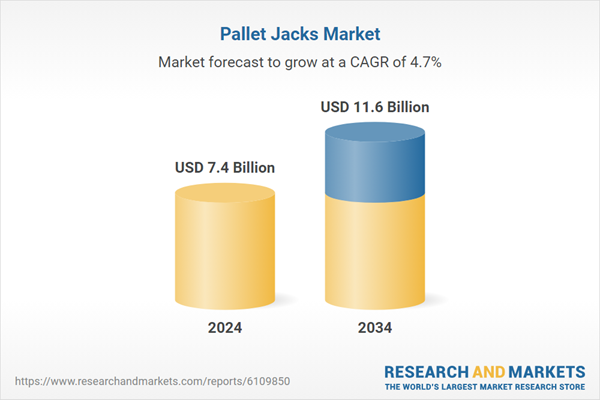For example, Ireland’s ongoing economic expansion is driving an increased demand for warehousing space, as businesses look to scale their operations and meet the growing needs of both domestic and international markets. The expansion is not only fueling the demand for more storage but also encouraging innovations in logistics and supply chain management to ensure smoother, more efficient distribution processes. As companies adapt to new trade regulations and supply chain challenges, they are prioritizing investments in warehouses and distribution centers within their borders. This shift has had a profound effect on the logistics landscape, pushing businesses to secure more resilient, self-sufficient supply chains. The UK’s logistics sector, one of the most established and advanced in Europe, has seen accelerated growth in response to these challenges.
The logistics and warehousing segment held a 36% share in 2024 and is forecasted to grow at a CAGR of 5% from 2025 to 2034. This growth is primarily fueled by the surge in global trade, the expansion of third-party logistics providers, and the increasing need for efficient material handling solutions. Pallet jacks are becoming indispensable in optimizing supply chains, improving operational efficiency, and reducing the need for manual labor in these growing sectors. Additionally, the continuous expansion of the e-commerce industry is driving significant demand for enhanced logistics and warehousing operations worldwide.
Regarding product categories, the medium-duty (2 to 5 tons) pallet jacks segment is expected to grow at a CAGR of 5.2% from 2025 to 2034, primarily due to its versatility in handling a variety of loads across different industries. The incorporation of electric-powered systems into these pallet jacks is also expected to drive adoption further, as they improve operational performance, reduce manual effort, and enhance user convenience.
U.S. Pallet Jacks Market held an 82% share and generated USD 1.8 billion in 2024. This dominance is largely attributed to the rapid expansion of warehouses and distribution centers worldwide. With the growing demand for faster inventory turnover and more efficient storage solutions, businesses are increasingly investing in advanced material handling equipment, like pallet jacks, to stay competitive in a booming market. The demand for pallet jacks is also driven by the broader trends of automation and digitization within the U.S. logistics industry.
Key players in the Global Pallet Jacks Market include Howard Handling, Jungheinrich, CUBLIFT, Toyota Material Handling, Doosan, Linde Material Handling, Hyster-Yale Materials Handling, Allman, Raymond Corporation, Vestil, Crown Equipment Corporation, RICO, HU-LIFT, and Mobile Industrial Robots. To strengthen their market presence, companies in the pallet jacks industry are adopting a variety of strategies. These include expanding their product portfolios to include electric-powered and automated pallet jacks, as well as focusing on product innovation to meet the evolving needs of customers.
Partnerships and collaborations with key logistics players, especially third-party logistics providers, help companies enhance their distribution channels. Additionally, investments in research and development are enabling companies to offer more efficient, cost-effective solutions. Expanding into emerging markets and strengthening their manufacturing capabilities through local production are other strategic moves to tap into growing demand. Marketing strategies that emphasize the operational benefits of pallet jacks, including reduced labor costs and increased efficiency, also play a crucial role in boosting their market position.
Comprehensive Market Analysis and Forecast
- Industry trends, key growth drivers, challenges, future opportunities, and regulatory landscape
- Competitive landscape with Porter’s Five Forces and PESTEL analysis
- Market size, segmentation, and regional forecasts
- In-depth company profiles, business strategies, financial insights, and SWOT analysis
This product will be delivered within 2-4 business days.
Table of Contents
Companies Mentioned
- Allman
- Clark
- Crown Equipment Corporation
- CUBLIFT
- Doosan
- Howard Handling
- HU-LIFT
- Hyster-Yale Materials Handling
- Jungheinrich
- Linde Material Handling
- Mobile Industrial Robots
- Raymond Corporation
- RICO
- Toyota Material Handling
- Vestil
Table Information
| Report Attribute | Details |
|---|---|
| No. of Pages | 220 |
| Published | June 2025 |
| Forecast Period | 2024 - 2034 |
| Estimated Market Value ( USD | $ 7.4 Billion |
| Forecasted Market Value ( USD | $ 11.6 Billion |
| Compound Annual Growth Rate | 4.7% |
| Regions Covered | Global |
| No. of Companies Mentioned | 15 |









